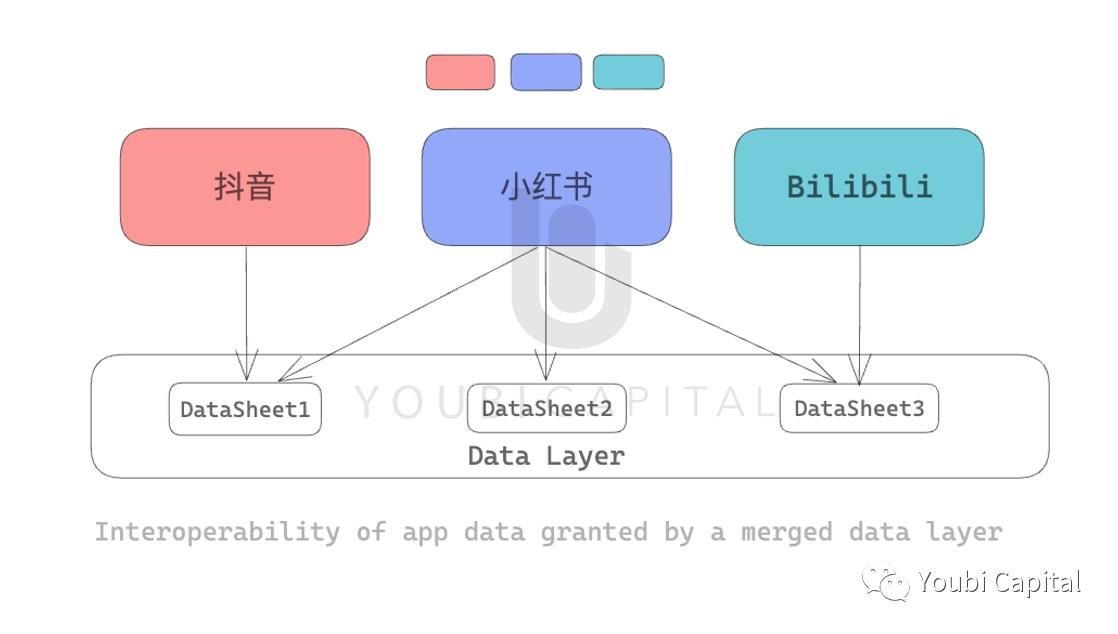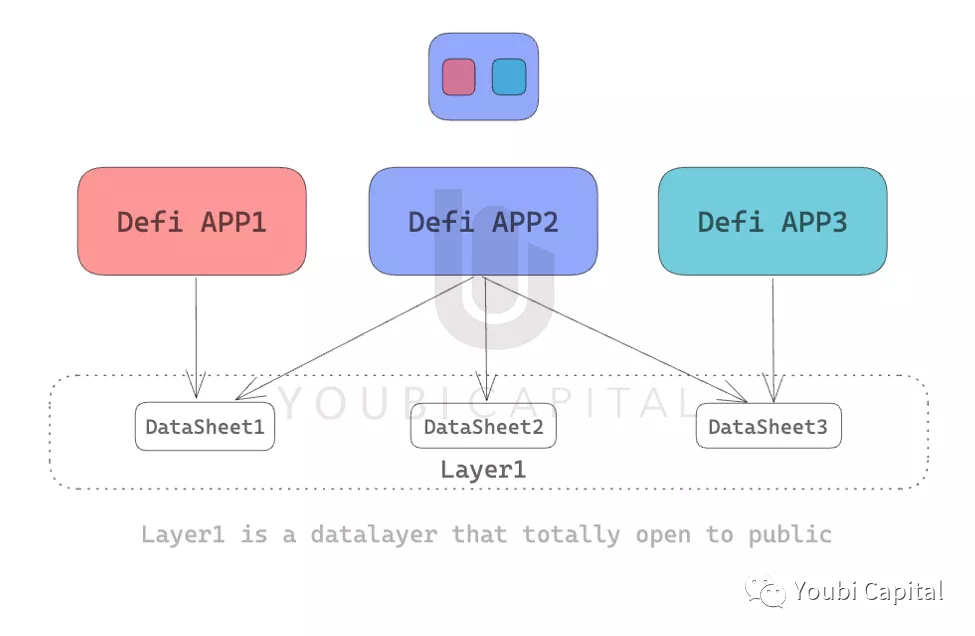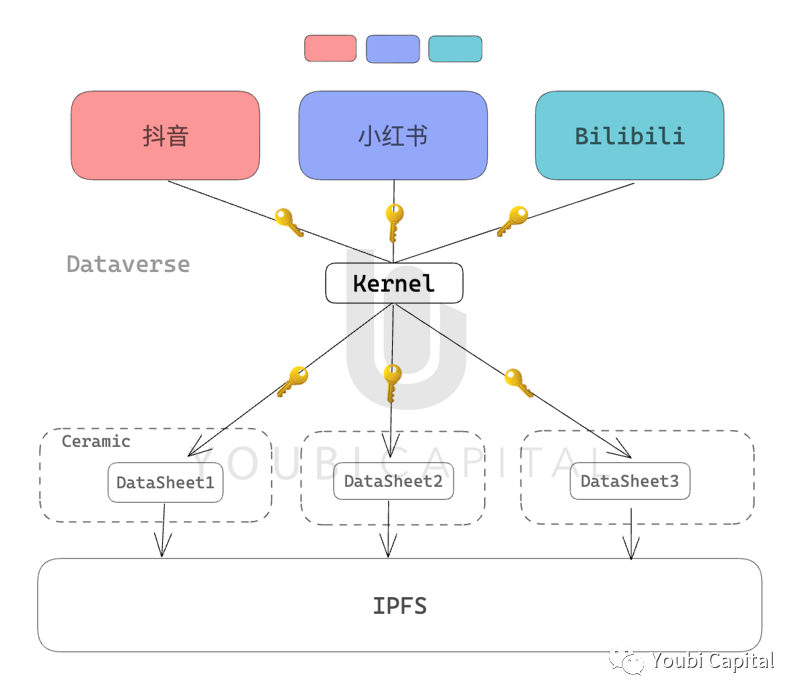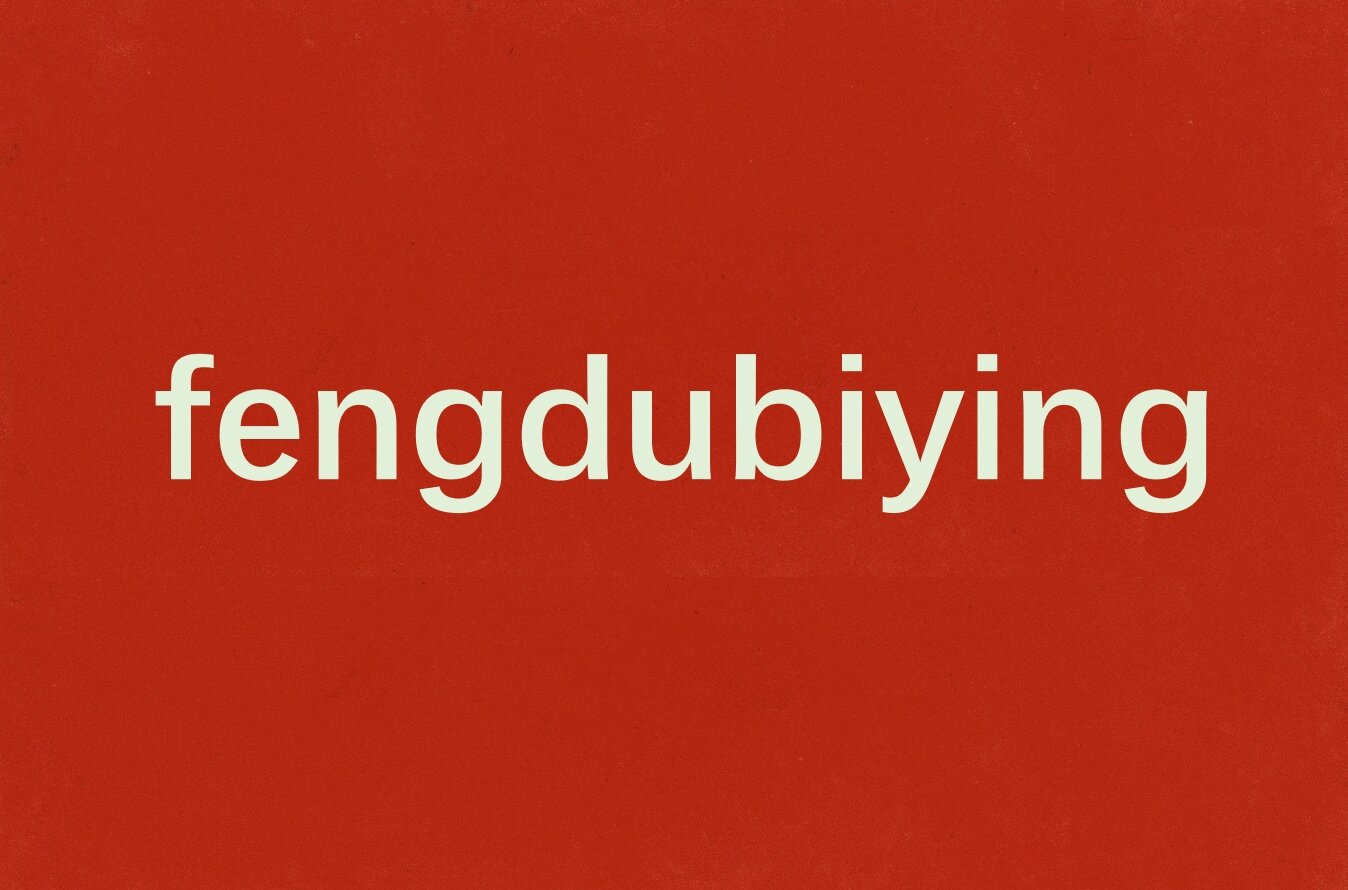Data Interoperability: The Core Experience of Web3
Originally by Chen Li, Jims Young, Li Gong and Ivo Entchev
first level title
1) The dilemma of Web2
We live in various APPs every day: chatting with friends on WeChat, choosing restaurants to go to with review software, exploring the diversity of life on Xiaohongshu, paying daily expenses with Alipay... The traces of our lives are all kinds of APP captures and precipitates in their respective databases.
At the same time, with the increasing requirements for work and life, we have more and more subdivided apps: from simple videos to long videos, short videos, and medium videos, from blogs to Weibo, long articles, pictures and texts Different presentation methods such as information flow, and increasingly refined user needs have created a more subdivided APP classification, which has also led to more scattered data.
The decentralization and incommunication of data among these APPs form "data islands" one by one. We repeatedly register accounts and write content between different APPs, and need to publish them again and again on each platform to achieve "full-platform synchronization".
And just imagine, if a video on Douyin can be synced to Xiaohongshu without feeling. Similarly, a barrage of a video we posted on Station B can also be synchronized to other platforms. The user's data can be shared between APPs, so the data no longer exists in isolated islands, and users can also use more free platform interoperability to achieve more creative content output. This is also the endgame experience of Web3 that is constantly being mentioned - a matrix of interoperable applications.

first level title
2) Why Web3
The meaning of Web3 includes concepts such as blockchain, cryptography, and decentralized economic models. Representative products include cross-sovereign currency Bitcoin, decentralized finance based on smart contracts, and decentralized computing and storage networks.
Taking decentralized finance as an example, the main features of Web3 applications are trustless asset management and transactions (signatures), and user data is stored in a public database, that is, on the public chain. There is no data isolation between applications, and even on most chains, the data between applications has completely permissionless interoperability. This degree of freedom far exceeds that of the Web2 platform, which has led to a large number of decentralized financial applications. The number of applications in the EVM system will increase by 1000 times between 2020 and 2022.

However, in terms of consumer applications, Web3 has encountered obvious bottlenecks. The data storage capacity of the public chain is very limited, and the price is extremely high (the storage cost of Ethereum is 1 million times that of AWS), which can only support the amount of data generated by decentralized financial applications, and cannot carry content and user behavior tracking And other large-scale data required by other C-end applications. The solution of Web3 is to meet such storage requirements off-chain, and organize and abstract resources to developers through cryptography. The specific implementation will be discussed later.
This off-chain storage solution, such as Filecoin and Arweave, stores data in a distributed and encrypted manner on each server in their network, and the cost is lower than that of centralized storage. Unlike the completely open data on the public chain, these data require the authorization of the user before they can be called.
Here I want to mention one of the main ideas in the early days of the Web3 application concept. The model that breaks through the development ceiling of the application platform must be that the user owns the data instead of the platform. At the same time, the user should also own a part of the application platform, so that the platform can maximize data mining. At the same time of value, share benefits with users*.
first level title

3) Web3 technology stack - start from Defi
Compared with traditional C-side applications, Defi applications respond very slowly. It usually takes a few seconds to tens of seconds or even longer for a transaction to complete. However, IPFS-based applications will take at least a minute, and sometimes as long as several hours, to synchronize a content update. The speed of these applications is determined by the speed of their back-end database updates.
The speed of Defi is based on the consensus of the public chain and is limited by the degree of decentralization of the network; for non-financial applications, the content generally only exists on one or a few nodes, and IPFS synchronizes addressing information, because the decentralization of nodes The degree is higher and the synchronization time is longer.
In order to solve this problem, different blockchains have developed their own Layer 2 to store and update data that needs to be processed quickly, and then transfer it to the chain at regular intervals. And something similar is happening on IPFS, which is what Ceramic does. Ceramic nodes can be used like a centralized cloud to record events that occur on an application, and then update the results to IPFS after a period of time, so it can be regarded as the second layer of IPFS.
With this second layer, the dapp experience can be very close to the app. In addition to dynamic storage, Ceramics also proposes the concept of data model, which establishes data standards between applications and makes cross-application data interoperability possible.

Dataverse-OS further abstracts and isolates resources on the basis of Ceramic, and creates a Kernel that can manage storage resources and identities, similar to the kernel of an operating system, allowing applications and users to authenticate through their public keys. Access to resources without aggression. The advantage of this is that all applications can run in the same Kernel instead of independent systems. There is no need to connect between applications, and you can obtain the permission of any data table through the Kernel application and the authorization of the user's private key.

first level title
4) Prospects and challenges
Since the birth of Web3, allowing data to flow freely between applications has always been one of our visions. With the continuous maturity of many technology stacks, this time we finally almost there.
For users, this is the first time that data interoperability can be realized across all categories between Web3 applications. We can share barrage between various video platforms, and discuss the same topic with netizens all over the world without being restricted by platforms; personal assets can be paid between various platforms, and personal social points and reputations will also be shared by all APP is widely recognized; we can even freely manage our own data, let it flow freely between applications and users, and achieve more breakthroughs in composability.
For developers, the traffic threshold is so low for the first time that they can easily obtain and use the information released by users. Data is no longer the threshold of competition between applications, but good products are. At the same time, the threshold of development has been further lowered. With the continuous popularization of no-code tools, the threshold of front-end has been continuously lowered. Only need to connect with the back-end of Web3, an application can be born, and all these are close at hand. .
In Web2.0, the cloud-based operating system is becoming the most sticky user portal. More and more functions are integrated into the cloud operating system, and more and more user experiences are also migrated to the cloud. This is an unstoppable trend. User-centered cloud services are bound to compete with centralized platforms for developers and users. We believe that in terms of content and social applications, user-centered cloud service platforms have an important role to play. Superiority.
Original link



